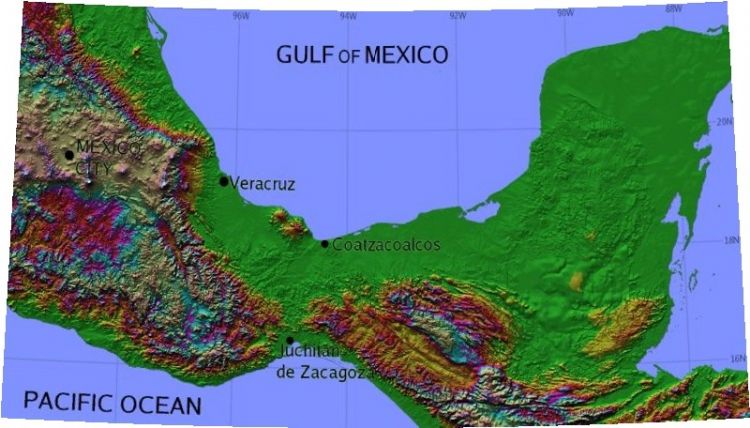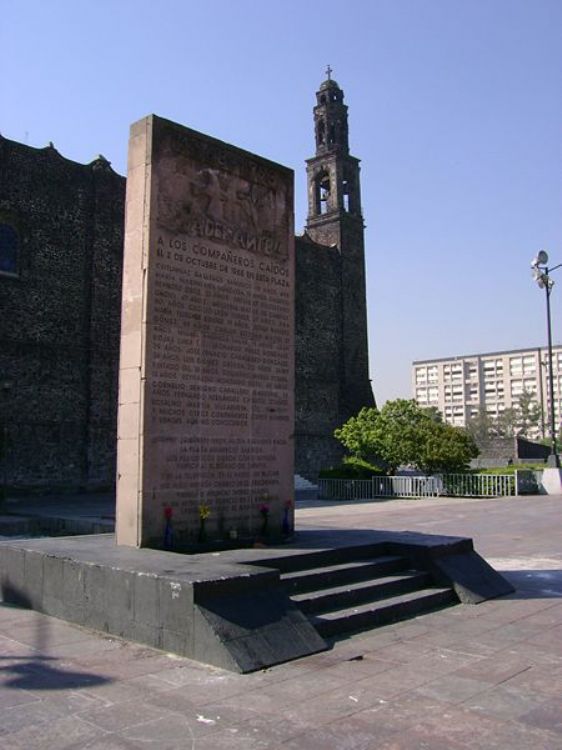Isthmus of Tehuantepec

The Isthmus of Tehuantepec is the shortest route to cross the country between the Pacific Ocean and the Gulf of Mexico. Its name originated from the city of Santo Domingo Tehuantepec, in the State of Oaxaca, of Nahuatl origin, it means âjaguar hillâ.
Located in the south of Mexico, it is comprised between meridians 94 and 96 west and the southeastern parts of Veracruz and Oaxaca, including small areas of Chiapas and Tabasco. This isthmus separates North America from Central America. Only 125 miles long, it is the most northern straight in the continent. The main cities found in the Isthmus of Tehuantepec are Coatzacoalcos, Minatitlán and Acayucan, in Veracruz; and Salina Cruz, Juchitán de Zaragoza, Tehuantepec and Matias Romero, in Oaxaca.
Since the time of the Conquest to present days, this isthmus has interested economists, politicians and geographers that have dreamed of building an inter-oceanic channel. But its cost has been deemed too high, so it has been used as a link between the two oceans with the use of the National Tehuantepec Railway, inaugurated in 1907 to communicate the ports of Coatzacoalcos in the Gulf of Mexico and Salina Cruz, in the Pacific Ocean.
The residents of the 35 municipalities found within the Isthmus are known as istmeños and remain faithful to their traditions with deep ties to their indigenous past; the area proudly exhibits cultural attractions, historical sites, colonial architecture and archeological sites. The ethnic groups that predominate in this region are zapotecas, zoques, mixes and mixtecos, who still preserve their Indian language.
This area has a predominantly warm tropical climate. The average yearly rainfall at the isthmus is 3.960 mm and temperature is 95° F.
Besides the two great commercial ports, the area hosts an important industrial corridor and oil wells. There is also Los Chimalapas Biosphere Reserve, destined to the preservation of its natural wealth.
To take advantage of the Isthmus of Tehuantepec as an inter-oceanic channel for commercial purposes for being so close to United States has been proposed many times throughout history, but the Panama Channel was a more economically viable option for being significantly narrower. Before the construction of the Panama Channel, Isthmus of Tehuantepec was important for transportation and simply known as the Tehuantepec Route. In 1853, the Guadalupe-Hidalgo Treaty was signed by Mexico and the United States to use the isthmus for the transport of mail and goods by highway and railroad. The McLane-Ocampo Treaty was signed by Benito Juarez but was not approved by US Congress, although it would have allowed the free transit of North Americans through it.
Article Produced by the Editorial Team of Explorando México.
Copyright: Explorando México. All Rights Reserved.
Photo: Wikipedia






